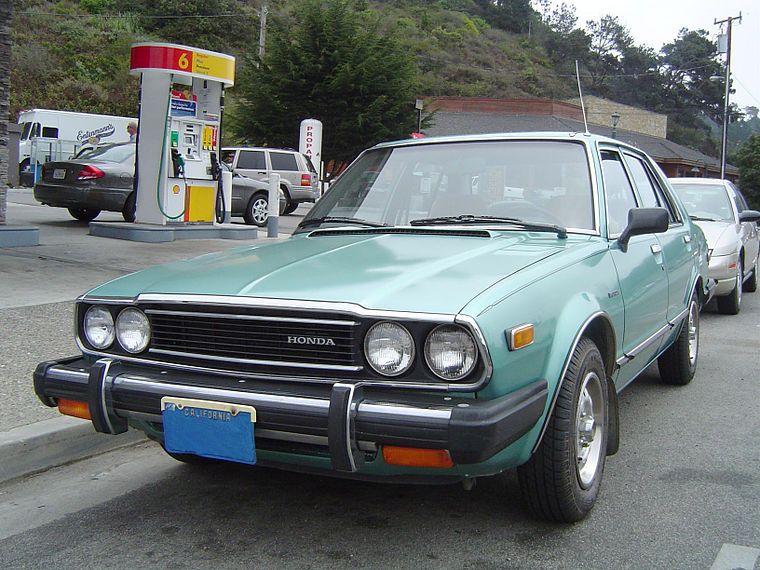
Disruption and Business
Nearly 2o years ago, I was reading a book on how small companies tend to tackle larger, established ones. The story that stuck with me from that book, though, is that of Honda.
Honda was reasonably successful in Japan, but had no presence in the US, at all. Japanese products in general were seen as inferior to American or European ones, and objectively, that was true. Honda’s first bike introduced to the US market was, at best, unreliable. But they found a product that they could sell. And they started selling bigger and better motorcycles, selling 100,000 by their fourth year.
Yes, they were already outselling Harley Davidson.
Ten years after entering the motorcycle market, they began to tackle the giant, the US auto industry, and began selling the N600 in 1969.
In just one state. Hawaii.
The next year, they expanded – to just the west coast. They leveraged, outright repurposed even, their existing network of motorcycle dealers, and the experience they gained in the US market through developing that network.
In 1972 they introduced the Civic, a model still made today, which in 1980 won Motor Trend’s “import car of the year”. Civic variants won twice more since then,
In 1976 they introduced the Accord, a model line which has won Car and Driver’s “10 best” a record 30 times.
In 1986 the company was so firmly founded they elected to expand their line to include a luxury marque – Acura.
Why did this work?
Because they started at the bottom. They didn’t start with Acura, no more than Toyota started with Lexus, and then work down. They started “good enough”, and as anyone who’s looked at the VHS/betamax format wars knows, “good enough” and “cheap” have a big advantage over “great and expensive”. Especially in the much larger middle/lower class income demographics.
The first cars were just that. “Good enough.” But they improved, a little bit at a time. And kept on iterating, making the cars a little better, a little more consistent, until, as the story goes, Ford engineers comparing their own versions of transmissions to Mazda ones to figure out why theirs were failing more often, with the transmissions made to the same spec, were shocked at how much more consistent the Mazda parts were.
They iterated, they improved, and every improvement was built on for the next one.
So what about the “exceptions”
There’s a lot that can be said of Apple’s loss of focus lately post-Steve – lord knows I’ve said enough – but one of the things they consistently did between 2000 and 2007 was not so much create new products, but figure out what didn’t work with the old ones in a new market, and create something “good enough” that people were willing to pay a premium for.
Yes, they were priced at a premium – to an extent Apple could not ever be said to enter at the bottom of the market. Yet, the iPod, initially dismissed after several years of MP3 players by others as having “no wireless. Less space than a Nomad. Lame” took over the industry. Not because it had more features than all the other brands, but because it did what it did well. The dial interface was completely different from what anybody else was using.
And they started in one niche of the market where they knew they had users. And they improved it, expanded it to windows. they weren’t afraid to cannibalize their own market.
Ditto smartphones. Yes, some still miss their blackberries (I don’t miss supporting them – but the server/enterprise capabilities were ahead of their time in a way), and there were “smart” phones with internet and email capability including palmOS, but the combination of a high-resolution (touch and visual) touch screen, cellular, flash memory were utterly unique, and outside of some residual flip phones, it’s hard to find anything these days that doesn’t follow the same basic model.
Here’s the funny part – even though the entered at the top end of the premium phone market, the original iPhone was arguably a culmination of steps taken and technological decisions made years ago. The only aspects truly new to Apple that was an establishment market was the cellular/phone/radio design – and they were not entirely unfamiliar with wireless transmission. The OS was based on a common core and kernel they’d been improving for mobile platforms for years, and is far from the only case where they’d laid groundwork with seemingly pointless “what, there’s no user facing features!” backend fixes and optimizations that only bore fruit as nifty customer features years later. The capacitance/touch features? Apple’s trackpads have arguably been vastly better, hell, still are better, than almost any windows-based trackpad for sensitivity, precision, and responsiveness. It took me one use of several “high end” windows laptops to figure out why windows users hated trackpads so much.
In a way, they let other companies make the mistakes before them. They didn’t rest on their laurels, and they made strategic decisions on technologies to develop with an eye towards long term viability and development. They cared about getting it right. And they could do this because while they might not manufacture their own stuff, they were hands on on every aspect of design, including manufacturing methods, at every level.
Looking around the rest of the computer business, it’s interesting how some of the other top brands basically started out as manufacturers of components for other major companies, where IBM spun off its computer business to Lenovo while trying to keep the value-added high end.
All of this is why, when I saw the first Quantum Mortis book, I wasn’t too concerned. Sure, the art was uneven, even accounting for style, but it was good enough to tell the story at hand. The story was not told in the “current” style, but not out of line for the comics I grew up with from the 70’s and 80’s, and even though I hadn’t read the book it was based on, knowing it was part of a longer story, knew that this was going to be setup.
Every single one of those is a valid complaint for an established top-tier comics brand or artist. In an industry that, while it’s still vastly outselling Arkhaven, is not selling anywhere near what it used to, and has become self-referential, and catering to the core fans and their standards.
The same standards that put it out of the reach or interest of the larger audience comics used to cater to.
I’d also paid attention to how Vox had done previous projects, and to his stated intentions, and understood perfectly well that, barring going back on his commitments, iteration, “failing faster,” was part of the operating plan. And it was pretty obvious that releasing QM was a way to test the process on something not as brand-critical as the core Alt-Hero books.
So seeing the following at Vox Pop was utterly no surprise to me:
I have seen more than a few people, including my father, try to start a new business aimed at the high end of the market. Every single one of them failed. Not most of them, ALL of them. Every single one.
Now, L’Aristokrato may never have disrupted a market personally, but he has certainly seen new companies enter new markets throughout his life. When Honda entered the US car market, did they aim at the high end or the low end? How about Kia? When Diamond entered the video card market, did they come in as a low-cost provider or a high-end one? This is basic Business 102 stuff.
If you want to succeed in entering an existing market, the first and foremost objective has to be staying alive to play in the next round. And your ability to stay alive depends upon your resources. Sure, Mercedes can enter at the high end. So can Samsung. But a startup? No. See, we could have spent all the money from the Alt-Hero kickstarter on a single, beautiful, gold-plated 24-page issue using the most expensive artists we could hire. It would have been talked about and critically praised… and we would have gone out of business almost immediately.
And a bit later:
And then, I saw one low-end Taiwanese company after another enter the graphics board business. None of their products were even close to as good as my father’s cards. We kept retreating to the high end, from 1024 to 1280 to 1600 resolution. And our market share kept shrinking, until in desperation they tried to make a move into the chip market before the boards were replaced entirely by GPUs on the motherboard. It failed, for reasons that I’ve mentioned before. That company, once an $80 million company, has been dead for 20 years. That is why I know all about how markets are, and are not, successfully disrupted.
So we’re not trying to compete with Marvel, DC, Image, and everyone else on the art. We don’t have the resources for that yet. Sure, we want the art to be as good as we can make it, and that’s why I’ve hired a number of industry vets like Chuck, Frank, and others whose names you would recognize. But we’re not going to compete on the art, we’re going to compete on a) the characters, b) the storytelling, c) the worldbuilding, d) the price, and, e) discount and availability.
I’m not going to claim entrepreneurial or marketing genius – but I’ve worked for myself for quite a few years now so I’ve seen the above or similar play out with clients and businesses I’ve done work for, or purchased from.
